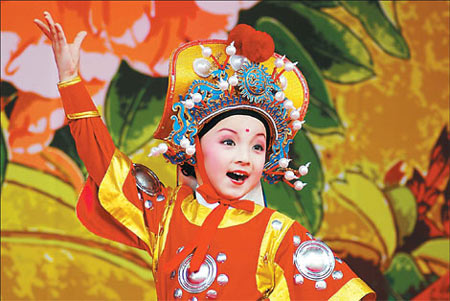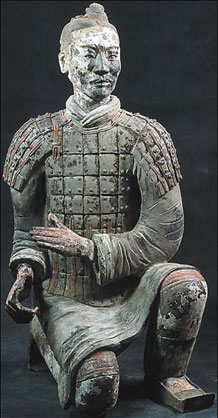There are no prizes for guessing the dominant theme of the Olympics opening ceremony. In the last of his five-part preview series, however, Raymond Zhou says the message will be hard to convey to the worldwide audience.
 A young opera performer plays the role of Huamulan, China's legendary heroine, with gusto. [China Daily]
A young opera performer plays the role of Huamulan, China's legendary heroine, with gusto. [China Daily] |
The Olympic opening ceremony did not become an extravaganza until the 1984 Los Angeles Games. However, with or without it, the festivities usually have had a theme.
The 1980 Moscow Games pinpointed "Nature" as its theme, with human bodies forming a rich variety of flora. The spectacle for the 2004 Athens Games revolved around "Ocean" and "Sculpture", two words that sum up the ancient civilization of Greece more succinctly than other monikers.
What theme will the Beijing Olympics adopt?
It's a no-brainer, so I won't be applauded or rewarded if I get it right.
Harmony.
It is the country's dominant ideology, the ultimate buzzword and a recurring leitmotif throughout Chinese culture.
But how to visualize such a concept as harmony? It's Tao, it's Zen, but hardly the stuff of a memorable spectacle. A good show needs drama. Drama entails tension. And tension is the flip side of harmony.
 The ancient terracotta warriors have inspired many modern artists. [China Daily]
The ancient terracotta warriors have inspired many modern artists. [China Daily] |
Confucianism has an innate connection with such an event as a televised celebration that will be watched by four billion spectators. Its emphasis on rituals and music plays subtly into the current revival of the orthodoxy that governed China for two millenniums. Where can you find a grander and more elaborate ritual than the Olympic opening ceremony? And it has music galore.
The peaceful coexistence of China's three major religions - Confucianism, Taoism and Buddhism - could be a good example to illustrate harmony.
Confucianism could be represented by bianzhong, a set of bronze bells hung in a wooden frame and struck with a mallet, producing melodious and solemn sounds that suggest courtly grandeur.
Buddhism has its chanting, a form of prayers that can still be heard in temples.
Taoism is colored by moderation, humility or even outright non-action, but many martial arts styles originated from it, such as Wudang. In terms of staging, the elements from the three religions can complement one another, just as there are religious venues in China that jointly celebrate two or more of the beliefs.
Then, there is the obligatory choreography that harmonizes the nation's 56 ethnicities. They all excel at singing and dancing, but I doubt each will be given a full-length number, a la the Nutcracker ballet, to flesh out their unique culture. Most likely, each will have a few seconds in the spotlight by showcasing its most impressive routine.